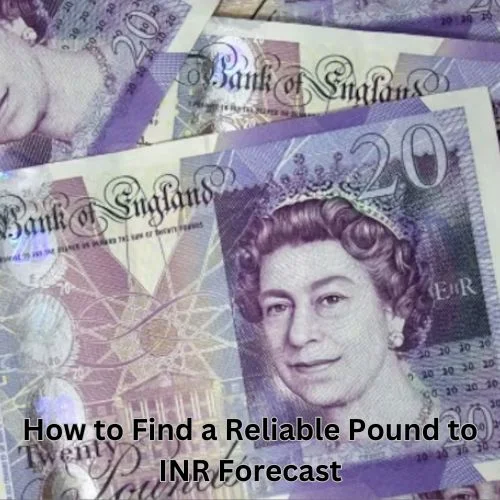India is renowned for its rich cultural tapestry, characterized by a multitude of diverse traditions and practices across its various states. The distinctiveness of each state’s culture is a source of immense pride for every citizen, highlighting the country’s vibrant and pluralistic identity.
Celebrations of festivals further underscore this diversity, with each occasion steeped in unique stories and cultural significance. Some festivals, such as Diwali and Navaratri, are observed throughout the nation, fostering a sense of unity and shared festivity. Simultaneously, certain festivals are exclusive to specific states, exemplified by Onam in Kerala and Durga Puja in West Bengal.
In an effort to appreciate the kaleidoscope of festivals across India, the following is a comprehensive list organized by state and season, providing a structured overview of the country’s rich cultural heritage.
List of Important Indian Festival :State wise
| State | Important Indian Festival |
| Andhra Pradesh | Dasara, Ugadi, ,Eid-ul-Fitr, Eid-ul-Azha |
| Arunachal Pradesh | Reh, Boori Boot, Myoko. |
| Assam | Ambubachi, Bhogali Bihu, Eid-ul-Fitr, Eid-ul-Azha |
| Bihar | Chhath Puja, Eid-ul-Fitr, Eid-ul-Azha, Holi , Diwali . |
| Chhattisgarh | Maghi Purnima, Bastar Dussehra |
| Goa | Mando, Shigmo Mela |
| Gujarat | Navratri, Janmashtami, Kutch Rann Utsav, Diwali |
| Himachal Pradesh | Gochi Festival, Mahashivaratri |
| Haryana | Baisakhi, Surajkund Mela |
| Jammu and Kashmir | Dosmoche, Eid-ul-Fitr, Eid-ul-Azha |
| Jharkhand | Eid-ul-Fitr, Eid-ul-Azha, Holi, Rohini . |
| Karnataka | Mysore Dasara, Ugadi,Eid-ul-Fitr, Eid-ul-Azha |
| Kerala | Onam, Eid-ul-Fitr, Eid-ul-Azha |
| Madhya Pradesh | Eid-ul-Fitr, Eid-ul-Azha, Khujaraho festival, Diwali |
| Meghalaya | Wangla. |
| Maharashtra | Ganesh Utsav, Gudi Padva,Eid-ul-Fitr, Eid-ul-Azha, Navratri , |
| Manipur | Porag. |
| Mizoram | Chapcharkut Festival |
| Nagaland | Hornbill festival . |
| Odisha | Rath Yatra, Raja Parba,Konark Festival. |
| Punjab | Lohri, Baisakhi, Guru Parab. |
| Rajasthan | Gangaur, Teej, Pushkar Fair, Eid |
| Sikkim | Losar, Saga Dawa |
| Tamil Nadu | Pongal, Jallikattu, |
| Telangana | Bathukamma |
| Tripura | Kharchi Puja. |
| West Bengal | Durga Puja , Eid-ul-Fitr, Eid-ul-Azha |
| Uttaranchal | Purna Kumbh Mela |
| Uttar Pradesh | Ram Navmi, Navaratri, Eid-ul-Fitr, Eid-ul-Azha, Ram Leela. |
Here Are The Some Important Indian Festivals :
Dasara ( Vijayadashami )
Vijayadashami, also commonly known as Dussehra, Dasara, or Dashain, stands as a prominent Hindu festival annually celebrated at the conclusion of Navaratri. This significant occasion takes place on the tenth day of the month of Ashvin, as per the Hindu Luni-Solar Calendar, usually aligning with the months of September and October in the Gregorian calendar.
The observance of Vijayadashami varies across the diverse regions of the Indian subcontinent, each marking the event for distinct reasons. In the southern, eastern, northeastern, and certain northern states, Vijayadashami signifies the culmination of Durga Puja, symbolizing goddess Durga’s triumph over the buffalo demon Mahishasura to reinstate and safeguard dharma.
Conversely, in the northern, central, and western states, it signifies the conclusion of Ramlila, commemorating the victory of god Rama over the demon king Ravana. Alternatively, it can be a demonstration of reverence for a specific aspect of goddess Devi, such as Durga or Saraswati.
The festivities of Vijayadashami encompass vibrant processions leading to a river or oceanfront. During these processions, clay statues of Durga, Lakshmi, Saraswati, Ganesha, and Kartikeya are carried, accompanied by music and chants. Subsequently, these images are immersed in the water as a symbolic act of dissolution and farewell. In other regions, towering effigies of Ravana, symbolizing malevolence, are set ablaze amidst fireworks, symbolizing the annihilation of evil. Additionally, the festival serves as the commencement of preparations for Diwali, the auspicious festival of lights, which unfolds twenty days post-Vijayadashami.
Ugadi
Ugadi, also known as Yugadi or Samvatsarādi, holds significant cultural and religious importance as the New Year’s Day in the Hindu calendar. This auspicious celebration is prominently observed in the states of Andhra Pradesh, Telangana, Karnataka, and Goa in India. Each year within the Telugu calendar is distinguished by a unique name, contributing to a total of 60 Telugu Years.
The commencement of a new year is marked by the day the nakshatra begins, known as ‘Ugadi,’ where “Uga” symbolizes the course of stars, and “Adi” denotes the beginning. Ugadi falls on the first day of the Hindu lunisolar calendar month of Chaitra, usually occurring in late March or early April according to the Gregorian calendar. Additionally, it aligns with the Tamil months of Panguni or Chithrai, occasionally coinciding with the day after Amavasya with the 27th Nakshatra Revati. The pivotal moment for Ugadi is the first New Moon after the March Equinox.
The observance of Ugadi involves various traditional rituals and customs. Elaborate patterns, known as Muggulu, are drawn on the floor, while doors are adorned with mango leaf decorations called torana. The exchange of gifts, including new clothes, charity to the less fortunate, oil massages followed by special baths, and visits to Hindu temples are integral parts of the celebration. A distinctive feature of Ugadi is the preparation and sharing of a special dish called pachadi, a festive food that encompasses all flavors – sweet, sour, salty, bitter, astringent, and piquant. In Telugu and Kannada Hindu traditions, pachadi serves as a symbolic reminder that one should anticipate all flavors of experiences in the upcoming year and embrace them fully.
In Karnataka, followers of the Souramana calendar system celebrate Ugadi when the sun transits into the Aries Constellation, coinciding with the festival of Baisakhi. This local variation is known as Souramana Ugadi or Mesha Sankranti.
Eid ul- Fitr
Eid ul-Fitr, a significant religious observance marking the conclusion of Ramadan, extends its celebration over a single day. This joyous occasion commemorates the strength bestowed by Allah (SWT) upon individuals during the fasting period of Ramadan.
The observance of Eid ul-Fitr involves several integral components:
Early Morning Rituals: The day begins with an early awakening, followed by warm greetings exchanged among family members.
Salah (Prayers): Devotees engage in Salah, offering prayers as an expression of gratitude and devotion.
Ghusl (Ablution): A purifying ablution, known as ghusl, is performed, symbolizing spiritual cleanliness.
Attire Preparation: Individuals often don new clothing, meticulously preparing for the festivities that lie ahead
Breakfast Gathering: The day unfolds with a shared breakfast, fostering familial and communal bonds among relatives and friends.
Zakat-ul-Fitr Obligation: Prior to Eid Salah, the mandatory payment of Zakat-ul-Fitr is ensured, underscoring the significance of charitable acts.
Congregational Eid Salah: Devotees come together for the Eid Salah, performed collectively, reinforcing the sense of community.
Eid Greetings Exchange: Heartfelt greetings and expressions of goodwill are shared among fellow Muslims, fostering a sense of unity and joy.
Visiting Loved Ones: The day is further marked by visits to family and friends, creating an atmosphere of celebration and togetherness.
Expressing Gratitude: Those who have successfully observed the fasts express gratitude to Allah (SWT) for granting them the fortitude to navigate through the challenging month of Ramadan.
Fidya or Kaffarah Considerations: Individuals who may have missed or broken their fasts and are obligated to pay Fidya or Kaffarah seek Allah’s mercy and strength to fulfill their respective obligations.
Eid ul-Fitr stands as a testament to the spiritual resilience cultivated during Ramadan and serves as a time for reflection, gratitude, and communal celebration.
Eid-ul-Azha
Eid ul-Adha stands as a profound occasion to honor the unwavering devotion of Prophet Ibrahim (AS), who exemplified obedience through his preparedness to sacrifice his son, Ismail, for the sake of Allah (SWT). In a moment of divine intervention, Allah (SWT) spared the life of Ismail (AS) and substituted him with a sheep, underscoring the nature of this event as a profound test.
This significant episode is commemorated during Eid ul-Adha through the ritual of Qurbani, the sacrificial offering of an animal in the name of Allah (SWT). The act of Qurbani is carried out immediately following the Eid Salah, marking a moment of deep spiritual significance.
While some activities observed during Eid ul-Fitr are shared with Eid ul-Adha, a distinctive element of the latter is the central act of Qurbani, typically involving the sacrifice of a goat. Prayers resonate throughout the community, accompanied by the exchange of heartfelt Eid ul-Adha wishes. Additionally, the tradition of giving gifts is observed, fostering a sense of generosity and communal joy.
Eid ul-Adha transcends individual households as families come together to partake in festive feasts spanning the three days of celebration. The atmosphere is one of profound joy and jubilation, underscoring the communal spirit that defines this auspicious occasion within the Muslim community.
Reh
The Reh festival holds paramount significance within the Idu Mishmi community, a group that reveres itself as the progeny of the divine mother ‘Nanyi Inyitaya’. Central to the preservation of bonds of brotherhood and social cohesion is the belief that one must partake in the puja or actively engage in the celebration of the Reh festival to secure the blessings of their revered deity.
This annual celebration spans a duration of three days, commencing on the 1st and concluding on the 3rd of February. The inaugural day, named ‘Andropu,’ involves fervent prayers with the aim of ensuring the seamless progression of the festival. Mithuns, a type of domesticated cattle, are brought and tethered in proximity to homes. The night is illuminated with the vibrant ‘Naya’ dance, marking the commencement of the festivities.
The subsequent day, referred to as ‘Eyanli,’ is characterized as the culmination of ceremonial animal sacrifices, involving mithuns and buffaloes. Guests are graciously entertained with a repast comprising rice, meat, and rice beer.
The third and final day, denoted as ‘Iyili,’ is dedicated to an opulent feast, extending hospitality to all attendees. Additionally, generous offerings of meal-rice are distributed to neighboring villages, ensuring inclusivity even for those unable to participate in the festivities firsthand. The Reh festival thus stands as a testament to the cultural and spiritual richness of the Idu Mishmi community, emphasizing the values of unity and communal harmony.
Boori Boot
Celebrated exclusively by the Nyishi tribes in February, the Boori Boot festival holds profound significance as it welcomes the arrival of spring and commemorates a bountiful harvest. This cultural extravaganza is an essential experience for those exploring the vibrant traditions of Arunachal Pradesh. The Nyishi community, the largest in the region, predominantly resides in Daporijo, Upper Subansiri Locale, and the Raga and Dollungmukh ranges of the Lower Subansiri Region.
Spanning a fortnight, the Boori Boot festival commences with a series of spirited competitions, including tug of war, traditional folk dances, and archery contests. The festival is deeply rooted in the belief that it invokes the benevolent spirit of Boori Boot, who is thought to bestow happiness and protection from ailments upon the participants.
The ceremonial proceedings commence with a special puja conducted by the reverend priest, Nibu, followed by a ritual animal sacrifice symbolizing prosperity and the collective well-being of mankind. The Boori Boot festival thus stands as a testament to the cultural richness and spiritual essence of the Nyishi tribe in Arunachal Pradesh.
Myoko
The Myoko festival stands as a cornerstone within the cultural fabric of the Apatani tribe, holding a position of paramount significance. This venerable celebration, acknowledged as one of the lengthiest in duration, spans from October to April, culminating in a ceremonious period commencing on the 20th of March and concluding on the 19th of April. Rooted in deep-seated traditions, the Apatani community engages in meticulous preparations for this event, driven by the belief that the performance of sacred rituals safeguards the fertility of both their fields and people.
The underpinning philosophy of the Myoko festival extends beyond mere agricultural prosperity, intertwining with a steadfast conviction that the observance of these rites serves to fortify familial bonds, strengthen clan connections, and foster unity among neighboring villages. Throughout the course of the main festival, a tapestry of intricate rituals and sacrificial ceremonies unfolds, each contributing to the rich tapestry of cultural heritage preserved by the Apatani tribe.
Ambubachi
The Ambubachi Mela is an annual Hindu congregation that takes place at the revered Kamakhya Temple in Guwahati, Assam. This significant event unfolds during the monsoon season, coinciding with the Assamese month of Ahaar, typically in mid-June when the sun transitions to the Mithuna zodiac, and the Brahmaputra River is in full spate. A distinctive phenomenon during this period is the transformation of the Brahmaputra River near the temple, which takes on a striking red hue for a span of three days.
The Ambubachi Mela holds profound significance as it commemorates the annual menstrual cycle of Goddess Kamakhya. Devotees believe that during this period, the presiding deity of the temple, Devi Kamakhya, also known as Mother Shakti, undergoes her sacred menstruation cycle. This time frame is regarded as particularly auspicious, as it is believed that the creative and nurturing power inherent in the ‘menses’ of Mother Earth becomes uniquely accessible to worshippers during the course of the mela.
Noteworthy is the absence of a conventional idol representing the presiding deity; instead, Devi Kamakhya is venerated in the form of a yoni-like stone, adorned by the flow of a natural spring. The Ambubachi Mela thus stands as a testament to the spiritual and cultural significance attributed to the cyclical rhythms of nature, symbolizing the divine connection between the goddess and her devotees.
Chhath Puja
Chhath, an ancient Hindu festival deeply rooted in the cultural heritage of the Indian subcontinent, holds historical significance within the states of Bihar, Uttar Pradesh, Jharkhand, and the Nepalese Autonomous provinces of Koshi, Madhesh, and Lumbini. This revered celebration, steeped in tradition, centers around expressions of gratitude and thankfulness to the solar deity, Surya, acknowledging the abundance of life’s blessings bestowed upon the Earth and seeking the fulfillment of specific wishes through dedicated prayers.
During Chhath Puja, a sacred observance occurring six days after Deepavali or Tihar, on the sixth day of the lunar month of Kartika (October–November) in the Hindu calendar Vikram Samvat, devotees pay homage to Chhathi Maiya, the sixth form of Prakrti and sister to Surya. This celebration, also known as Surya Shashti Vrata, spans four days and encompasses rituals such as holy bathing, fasting, abstaining from drinking water (vrata), standing in water, and offering prasada (prayer offerings) and arghya to the setting and rising sun. Some participants engage in a prostration march toward river banks as an additional expression of devotion.
Noteworthy is the environmentally conscious nature of Chhath, as environmentalists assert it to be one of the most eco-friendly religious festivals globally. Devotees universally prepare similar prasada (religious food) and offerings, fostering a sense of unity and shared cultural practices. While Chhath Puja finds its widest observance in Nepal and the Indian states of Bihar, West Bengal, and Jharkhand, its influence extends to regions with diaspora and migrant communities from these areas.
The celebration resonates in northern regions and major north Indian urban centers, including Delhi, where communities gather to partake in the festivities. Notably, Mumbai and the Kathmandu Valley witness the participation of hundreds of thousands of people, emphasizing the festival’s widespread appeal and cultural significance.
Holi
Holi, pronounced as [‘hoːli:], stands as a revered Hindu festival widely acknowledged for its cultural significance as the Festival of Colours, Love, and Spring. Rooted in ancient traditions, this celebration holds deep spiritual importance, commemorating the enduring and divine love shared between the revered deities Radha and Krishna. Moreover, Holi symbolizes the triumph of good over evil, with historical references to the victory of Vishnu as Narasimha over the malevolent Hiranyakashipu.
Originating in the Indian subcontinent, Holi has transcended geographical boundaries and found resonance in various regions of Asia and parts of the Western world, owing to the widespread influence of the Indian diaspora.
Beyond its religious and mythological connections, Holi is a joyous observance marking the arrival of Spring in India, signaling the conclusion of winter and the blossoming of love. It serves as an invocation for a prosperous spring harvest season, embodying a holistic celebration of nature’s cycles.
This vibrant festival spans a night and a day, commencing on the evening of Purnima (full moon day) during the Hindu calendar month of Phalguna, typically corresponding to the middle of March in the Gregorian calendar. Holi encapsulates a blend of cultural richness, spiritual devotion, and the anticipation of renewal, making it a cherished and widely observed occasion.
Diwali
Diwali, also known as Deepavali, is a significant Hindu festival of lights, and its observance extends to other Indian religions. This joyous occasion symbolizes the triumph of light over darkness, good over evil, and knowledge over ignorance. Celebrated during the Hindu lunisolar months of Ashvin and Kartika, which typically span from mid-September to mid-November, Diwali festivities extend over five or six days.
The origins of Diwali are intertwined with various religious events, deities, and legends. Notably, it commemorates the return of Lord Rama to Ayodhya with his wife Sita and brother Lakshmana after vanquishing the demon king Ravana. Diwali is also closely associated with the revered goddess of prosperity, Lakshmi, and Ganesha, the deity of wisdom and obstacle removal. Regional traditions link the festival to a diverse array of figures such as Vishnu, Krishna, Durga, Shiva, Kali, Hanuman, Kubera, Yama, Yami, Dhanvantari, or Vishvakarman.
Although rooted in Hinduism, Diwali is embraced by followers of other faiths. Jains, for instance, observe their own Diwali, symbolizing the final liberation of Mahavira, while Sikhs celebrate Bandi Chhor Divas, marking the release of Guru Hargobind from a Mughal prison. Newar Buddhists commemorate Diwali by worshipping Lakshmi, and in Eastern India and Bangladesh, Hindus often celebrate by venerating the goddess Kali.
During Diwali, homes, temples, and workplaces are adorned with diyas (oil lamps), candles, and lanterns, creating a luminous and festive atmosphere. Hindus participate in a ritual oil bath at dawn on each day of the festival. Fireworks light up the sky, and intricate rangoli designs embellish floors, while jhalars adorn various parts of the house. The festival is also marked by feasts, the sharing of mithai (sweets), and serves as an annual homecoming and bonding period for families and communities.
Navaratri
Navaratri is an annual Hindu festival dedicated to honoring the goddess Durga, who represents an aspect of Adi Parashakti, the supreme goddess in Hinduism. This significant celebration spans over nine nights and ten days, occurring twice a year—first in the month of Chaitra (March/April of the Gregorian calendar) and again in the month of Ashvin (September–October).
While the festival holds diverse cultural importance throughout the Hindu Indian sphere, it is primarily observed during the post-monsoon autumn season, known as Sharada Navaratri.
The festival holds profound significance and is celebrated in various ways across different regions. Theoretically, there are four seasonal Navaratri, but in practical terms, the autumn festival of Sharada Navaratri takes precedence. This cultural observance serves as a time for devotees to pay homage to the goddess Durga and engage in rituals and festivities that vary based on the regional traditions within the rich tapestry of Hindu culture.
Janmashtami
Krishna Janmashtami, also referred to as Krishnashtami, Janmashtami, or Gokulashtami, stands as an annual Hindu festival dedicated to commemorating the birth of Krishna, the eighth avatar of Vishnu. This significant celebration holds particular prominence within the Vaishnavism tradition of Hinduism.
Observed on the eighth day (Ashtami) of the dark fortnight (Krishna Paksha) in Shravana Masa (in accordance with the amanta tradition) or Bhadrapada Masa (following the purnimanta tradition), the festivity typically falls in the months of August or September as per the Gregorian calendar.
The festival carries profound spiritual and cultural importance, with celebratory customs that encompass various rituals. These include a jubilant festival, the reading and recitation of sacred texts, expressive dance performances depicting episodes from the life of Krishna as detailed in the Bhagavata Purana, and devotional singing that extends until midnight—the purported time of Krishna’s birth.
Among the observances associated with Krishna Janmashtami is the practice of fasting (upavasa) and other devotional activities. This celebration transcends geographical boundaries and is widely embraced not only across India but also among Hindu communities worldwide.
In certain Hindu scriptures, such as the Gita Govinda, Krishna is recognized as the supreme God and the origin of all avatars, adding to the festival’s spiritual significance. The festivities, marked by a blend of reverence and joy, contribute to the cultural tapestry of Hindu traditions.
Onam
Onam, an annual harvest and cultural festival deeply rooted in Hinduism, holds special significance for the people of Kerala. Recognized as the official festival of the state, Onam is a major cultural event marked by a diverse array of celebrations.
This festival commemorates the ancient legends of Vamana, the fifth avatar of the Hindu deity Vishnu, and the benevolent daitya king Mahabali. According to Hindu mythology, Mahabali, the king of the asuras, triumphs over Indra, the king of the devas. Seeking refuge, the devas turn to Vishnu, who, in the form of Vamana, intervenes to restore Indra’s power. In a poignant twist, Vamana, appearing as a dwarf man, requests a mere three feet of land for a fire-altar during one of Mahabali’s ritual sacrifices. Despite warnings from the sage Shukra about Vamana’s true identity, Mahabali agrees.
Vamana then grows in size, covering all of existence in three strides. This act restores the three worlds to Indra, while Mahabali and the asuras are banished to the netherworld (Patala). However, moved by Mahabali’s love for his subjects, Vamana grants the king’s sole wish—to visit his kingdom once every year. This annual homecoming of Mahabali is celebrated as Onam in Kerala.
The date of Onam is determined by the Panchangam and coincides with the 22nd nakshatra Thiruvonam in the month Chingam of the Malayalam calendar, corresponding to August–September in the Gregorian calendar.
Onam, with its rich cultural tapestry, not only serves as a testament to the religious and mythological heritage but also unites the people of Kerala in joyous celebration.
Rama Navami
Rama Navami, a prominent Hindu festival, venerates the auspicious birth of Rama, widely regarded as the seventh avatar of Vishnu and a cherished deity within Hinduism. Revered for embodying the ideals of an exemplary king and virtuous human, Rama is celebrated for his commitment to righteousness and ethical conduct.
Observed on the ninth day of the bright half (Shukla Paksha) of the Chaitra lunar cycle, typically falling in March-April, Rama Navami is an integral part of the Chaitra Navaratri festival in spring. Notably, this occasion holds significance as a public holiday for government employees in India.
The customs and rituals associated with Rama Navami exhibit diverse regional variations across India. A common practice involves recitations from the Hindu epic Ramayana, narrating the life and exploits of Rama. Devotees, particularly those adhering to the Vaishnava tradition, engage in temple visits, prayer, fasting, spiritual discourses, and the rendition of devotional songs such as bhajans or kirtans.
Some adherents express their devotion by symbolically worshiping Rama as an infant, placing an image of him in a cradle. The festival also witnesses acts of benevolence, including charitable events and communal meals. For many Hindus, Rama Navami serves as an occasion for moral contemplation and reflection.
Conclusion
India’s rich cultural tapestry is exemplified by the diverse and vibrant festivals celebrated across its states. The compilation of important festivals organized state-wise showcases the depth of cultural heritage, religious diversity, and regional traditions that define the country. From the grandeur of Durga Puja in West Bengal to the spiritual resonance of Diwali celebrated nationwide, each festival carries unique significance, rooted in mythology, history, and local customs.
India’s festivals are not just events but expressions of identity, spirituality, and unity, reflecting the collective consciousness of a nation that takes pride in its cultural pluralism. Each festival becomes a thread in the intricate fabric of India’s cultural heritage, weaving together the tapestry of traditions that make the country a unique and vibrant mosaic.















